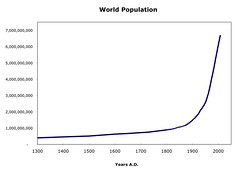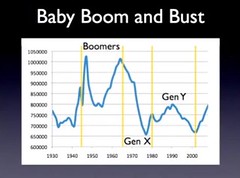| 6643084398 | primary pollutants | an air pollutant emitted directly from a source | | 0 |
| 6643084399 | sulfur oxides (SOx) | Primary source is coal burning. Primary and secondary effects include acid deposition, respiratory irritation, plant damage. Reduction methods include: scrubbers, burn low sulfur fuel. | | 1 |
| 6643084400 | nitrogen oxides (NOx) | Major source is auto exhaust. Primary and secondary effects include acidification of lakes, respiratory irritation, leads to smog and ozone. Reduced using catalytic converters. | | 2 |
| 6643084401 | CO2 | automobile exhaust as well as burning of wood and coal. A greenhouse gas | | 3 |
| 6643084404 | point source pollution | Pollutants discharged from a single identifiable location (e.g., pipes, ditches, channels, sewers, tunnels, containers of various types). | | 4 |
| 6643084405 | non-point source pollution | pollution that does not have a specific point of release, open,loop recycling,when materials are reused to form new products. | | 5 |
| 6643084406 | criteria pollutants | pollutants judged to pose especially great threats to human health (carbon monoxide, sulfur dioxide, nitrogen dioxide, tropospheric ozone, particulate matter and lead) | | 6 |
| 6643084408 | ozone | gas that absorbs ultraviolet solar radiation, found in the stratosphere, a zone between 15 and 50 kilometers (9 to 30 miles) above Earth's surface. | | 7 |
| 6643084409 | industrial smog (gray) | smog resulting from emissions from industry and other sources of gases produced by the burning of fossil fuels. | | 8 |
| 6643084410 | photochemical smog (brown) | A brownish haze that is a mixture of ozone and other chemicals, formed when pollutants react with each other in the presence of sunlight | | 9 |
| 6643084411 | chlorofluorocarbons (CFCs) | These reduce concentration of ozone in the stratosphere and created the ozone hole, they are responsible for more UVB radiation in the surface of earth | | 10 |
| 6643084412 | ozone loss | Greatest in the spring as the chlorine breaks down ozone into O2 | | 11 |
| 6643084413 | acid precipitation | Conversion of sulfur oxides and nitrogen oxides to acids that return to Earth as rain, snow, or fog | | 12 |
| 6643084418 | eutrophication | excessive richness of nutrients in a lake or other body of water, frequently due to runoff from the land, which causes a dense growth of plant life and death of animal life from lack of oxygen. | | 13 |
| 6643084419 | hypoxic zone | Also known as Dead Zone --> result of cultural eutrophication and lack of oxygen where fish die. | | 14 |
| 6643084420 | pH | The measure of concentration of H ions in water | | 15 |
| 6643084421 | dissolved oxygen | microscopic bubbles of gaseous oxygen (O2) that are mixed in water and available to aquatic organisms for respiration (mg/L) | | 16 |
| 6643084422 | turbidity | a measure of the cloudiness of water from sediments, microscopic organisms, or pollutants (NTU) | | 17 |
| 6643084423 | BOD | Biological Oxygen Demand | | 18 |
| 6643084424 | wastewater | any water that has been used by humans. This includes human sewage, water drained from showers, tubs, sinks, dishwashers, washing machines, water from industrial processes, and storm water runoff. | | 19 |
| 6643084425 | physical treatment | in a sewage treatment plant, the initial filtration that is done to remove debris such as stones, sticks, rags, toys, and other objects that were flushed down the toilet. | | 20 |
| 6643084427 | sludge | the solids that remain after the secondary treatment of sewage. | | 21 |
| 6643084429 | gray water | all of the wastewater that drains from washing machines, sinks, dishwashers, tubs or showers and can be reused for non-sanitary purposes | | 22 |
| 6643084431 | noise pollution | any noise that causes stress or has the potential to damage human health. | | 23 |
| 9771466029 | secondary pollutants | converted to a hazardous form after entering the air and mixing with other air components | | 24 |
| 9771494580 | Carbon monoxide (CO) | a colorless, odorless toxic flammable gas formed by incomplete combustion of carbon. | | 25 |
| 9771600934 | Formaldehyde | Indoor air pollutant present in furniture, lacquer, and particle board | | 26 |
| 9771612612 | Asbestos | A fiber once used in insulation and other materials that can cause respiratory diseases. | | 27 |
| 9771615496 | Radon | Pollutant from the decay of uranium | | 28 |
| 9771627654 | Particulate matter | A mixture of dust, acids, and other chemicals that can be hazardous to human health | | 29 |
| 9771652534 | Lead (Pb) | Causes neurological damage. Was in gasoline, paint, and old pipes | | 30 |
| 9771662329 | Mercury Pollution | A toxic metal released into the air and water mainly from coal-fired power plants and mining. | | 31 |
| 9771677369 | Volatile organic compounds | Organic compounds that exist as gases in the air. Most are hydrocarbons. | | 32 |
| 9772640165 | Incineration | The burning of solid waste that results in air pollution and hazardous materials | | 33 |
| 9772662422 | Sanitary landfill | Giant hole in the ground into which most municipal solid waste is dumped | | 34 |
| 9772671861 | Chemical treatment | Neutralizes acidic wastes | | 35 |
| 9772681648 | Methane (CH4) | Flammable gas produced by landfills | | 36 |
| 9772704183 | Electrostatic precipitators | Reduce particulate matter | | 37 |
| 9772707821 | Catalytic converter | Reduces CO and NOx | | 38 |
| 9772724692 | Superfund | a US federal government program designed to fund the cleanup of toxic wastes. | | 39 |



















































































































